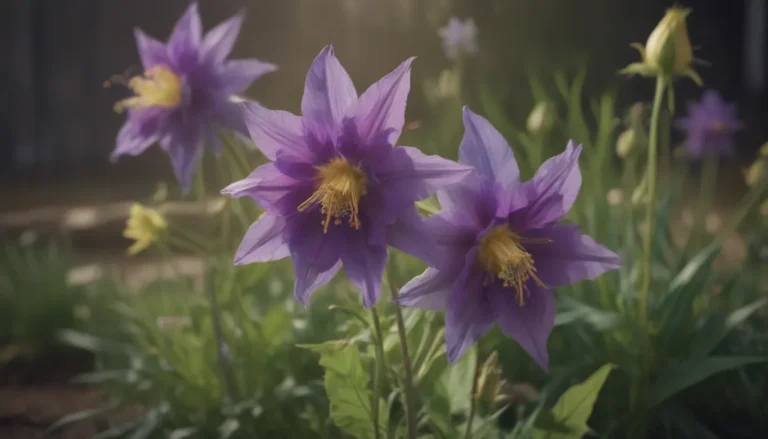Everything You Need to Know About Growing and Caring for European Mountain Ash

Welcome to our guide on how to grow and care for European mountain ash, also known as the rowan tree. If you’re looking to add a touch of color and beauty to your garden or landscape, this deciduous tree with its distinctive clusters of red berries is a perfect choice. In this article, we will provide you with all the essential information you need to successfully cultivate and maintain European mountain ash in your outdoor space.
Introduction to European Mountain Ash
European mountain ash is a versatile tree that thrives in cool, mountainous conditions. Its white flowers bloom in the spring, but it is the vibrant red berries that appear in late summer and last throughout the winter that make this tree truly stand out. To ensure the optimal growth and health of your European mountain ash, it is essential to provide the right care and conditions.
European Mountain Ash Care
Here are the main care requirements for growing European mountain ash:
Light
- European mountain ash requires full sun for at least six to eight hours per day.
- Partial sun is acceptable, but avoid exposing the tree to scorching sunlight, as it can cause the tree to wither.
Soil
- Perform a soil test to determine if the soil is acidic, preferably in the range of 4.5 to 6.0.
- Moist, well-drained soils are ideal for European mountain ash.
- Avoid compact or salty soils, as they can hinder the tree’s growth.
Water
- Maintain medium soil moisture to keep the tree healthy.
- If there is insufficient rainfall, water the tree with 1 inch of water per week.
Temperature and Humidity
- European mountain ash thrives best in cool mountain climates.
- It is not suitable for regions south of USDA Zones 5 and 6.
Fertilizer
- If the soil is rich and moist, European mountain ash does not require additional fertilizer.
- In poor soil conditions, consider feeding the tree to promote healthy growth.
Types of European Mountain Ash
- ‘Fructo Luteo’:
- ‘Sheerwater Seedling’:
Pruning and Propagation
Pruning
- To avoid spreading fire blight, prune European mountain ash during the tree’s dormant period in winter.
Propagating European Mountain Ash
- Propagate the tree using semi-hardwood cuttings.
- Cuttings are most successful when taken from younger trees in the spring.
Growing European Mountain Ash From Seeds
- Propagating European mountain ash from seeds is a straightforward process.
- Ensure the seeds undergo the stratification process to enhance germination.
Common Pests and Plant Diseases
European mountain ash is susceptible to various pests and diseases that can affect its health. Keep an eye out for the following:
Pests:
– Aphids
– Apple fruit moth (Argyresthia conjugella)
– Blister mites
– Mountain-ash sawfly larvae (Pristiphora geniculata)
– Oystershell scale (Lepidosaphes ulmi)
Diseases:
– Apple scab (Venturia inaequalis)
– Botryosphaeria (Botryosphaeria dothidea)
– Cedar-quince rust (Gymnosporangium clavipes)
– Cytospora canker (Cytospora spp.)
– Bacterial fire blight
– Honey fungus
– Powdery mildew
Common Problems With European Mountain Ash
Despite its resilience, European mountain ash may still face certain challenges. Look out for these common issues:
Brown/Black Leaves
- Leaf spot can cause brown spots with black spores on the leaves, leading to leaf drop.
Splitting Bark
- Excessive splitting may indicate stress on the tree.
- Check for signs of honey fungus if you detect a mushroom-like smell.
No Flowers or Berries
- Waterlogged or poor soil conditions may prevent the tree from producing flowers and berries.
Blue Growth on Branches
- Lichen growth on branches is typically harmless and indicates a healthy environment.
European mountain ash berries are widely debated regarding their toxicity to humans and animals. While some sources claim they are toxic, animals tend to avoid them due to their unpalatable taste. Berries can be cooked and used for jellies, adding versatility to the tree’s appeal.
In conclusion, European mountain ash is a beautiful and adaptable tree that can thrive in the right conditions. By following the care tips and guidelines provided in this article, you can enjoy the striking beauty of European mountain ash in your outdoor space. Remember to monitor for pests, diseases, and common issues to ensure the tree’s continued health and vitality.
Whether you’re a seasoned gardener or a novice enthusiast, European mountain ash is a rewarding addition to any landscape. With the proper care and attention, you can cultivate a thriving and vibrant tree that will enhance the beauty of your garden for years to come.
Invasive Plant Atlas. Botryosphaeria Canker. University of California Statewide Integrated Pest Management Program. Cedar Quince Rust. University of Illinois Extension. Cytospora Canker. University of Minnesota Extension. Honey Fungus. RHS. What is This Fruit and is it Edible? South Dakota State University Extension. Sorbus americana. North Carolina State University Extension. Sorbus Aucuparia. North Carolina State University Extension.





